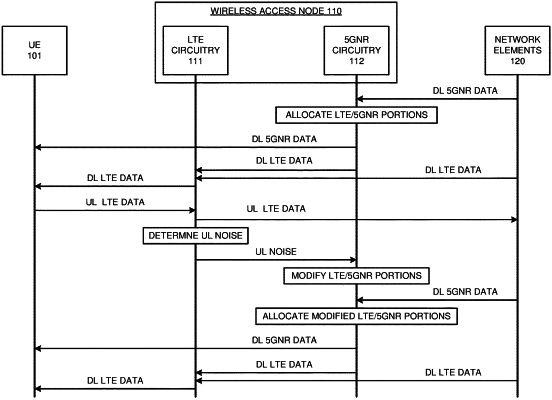| CPC H04W 24/10 (2013.01) [G06F 9/45558 (2013.01); H04W 76/27 (2018.02); H04W 80/02 (2013.01); H04W 80/08 (2013.01); G06F 2009/45595 (2013.01)] | 20 Claims |

|
1. A method of operating a wireless access node to serve User Equipment (UE), the method comprising:
first Media Access Control (MAC) circuitry measuring uplink noise and indicating the uplink noise to Packet Data Convergence Protocol (PDCP) circuitry;
the PDCP circuitry identifying a noise metric for the wireless access node, receiving user data for delivery to the UE, allocating a first portion of the DL data and a second portion of the DL data based on the noise metric, transferring the first portion of the DL data over first Radio Link Control (RLC) circuitry to the first MAC circuitry, and transferring the second portion of the DL data over second RLC circuitry to second MAC circuitry;
the first MAC circuitry receiving the first portion of the DL data over the first RLC circuitry, scheduling wireless delivery of the first portion of the DL data, and transferring the first portion of the DL data to the UE over first Physical Layer (PHY) circuitry per the first MAC circuitry scheduling; and
the second MAC circuitry receiving the second portion of the DL data over the second RLC circuitry, scheduling wireless delivery of the second portion of the DL data, and transferring the second portion of the DL data to the UE over second PHY circuitry per the second MAC circuitry scheduling.
|